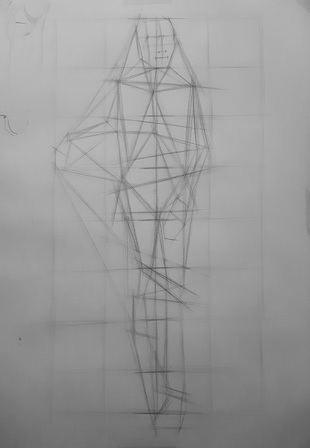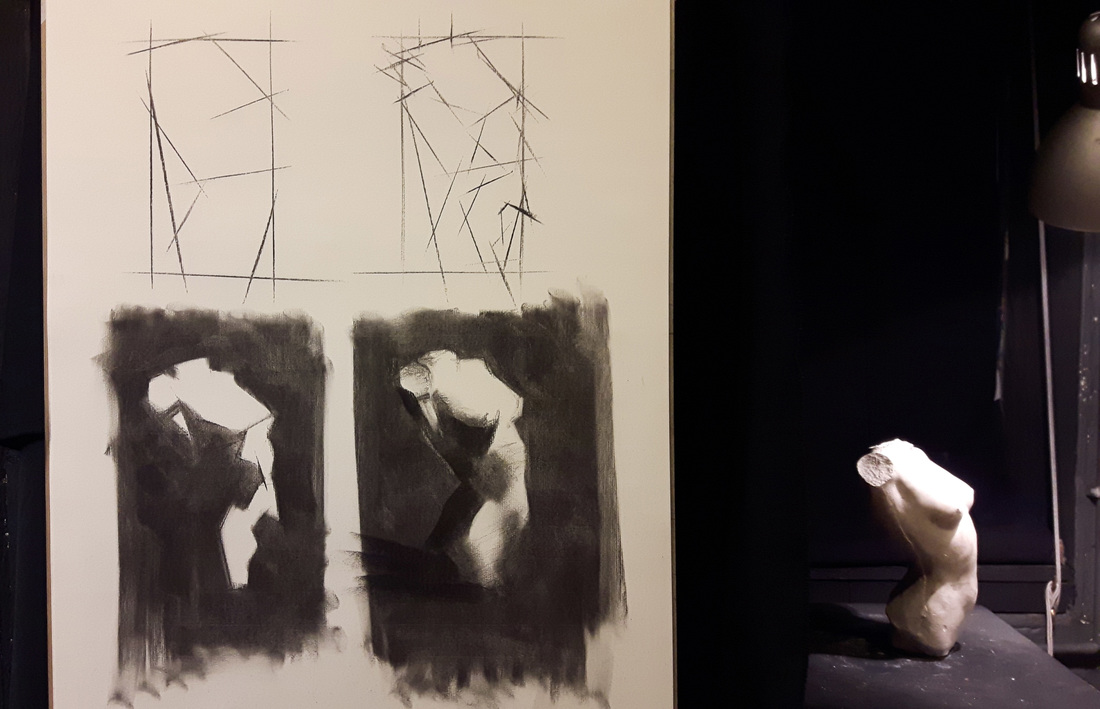 I had a very interesting week at London Fine Art Studios and a very challenging class to contend with. Last week my Gesture and Anatomy class did not perform nearly to the standards that I expect. We are starting a nine week project so having a good foundation is essential. I gave my students what at this point in their studies should be a simple task – draw from the model using only measuring lines, find accurate proportions and do not commit to drawing any of the contours of the figure (demonstration left). What did they end up with? Just enough measuring lines to say they completed the task, piss poor proportions, contours of the figure and everything else I didn’t ask for! I had gotten used to students who have done several terms of G&A and gave this group a bit too much slack. I recommend students treat their art studies like Bruce Lee treated martial arts, ‘Absorb what is useful. Reject what is useless. Add what is uniquely your own.’ Most people will approach their learning with an instinctive form of this philosophy even if they don’t fully understand it. I’m sure it sounds strange to reference a martial artist when teaching fine art, but I found the first and last chapters of ‘The Tao of Jeet Kune Do’ by Lee to be one of the best influences on my artistic study. Unfortunately Lee’s proverb can very easy be used to retreat to a form of ego protection instead of genuine learning and self improvement. Students can reject something because they find it difficult or initially confusing rather than it actually being useless. However it is impossible to accurately judge if something is useful or useless until the students is able to correctly execute the technique or method. Henry Yan, an artist I had the privilege of studying under, similarly said in order to understand if something is useful or not you must be able to perform the principle. So this week, we started our drawings over and I promised my students we would not leave this stage until they got it right. I gave them a series of simple directions which they were not to defer from: exactly what anatomical points to measure, how to measure them and in which order. Taking the students back to basics and not allowing them to diverge had a very positive effect – better drawings and a better understanding of the principle. I did find that by the end of class a couple of students had been pushed out of their comfort zone to the point where they started rejecting the instructions and reverted again to a type of ego protection, but we’ll address that next week. My Foundation Classes were much more straightforward. The students were very happy to finally move on from general proportions to drawing shadow shapes (demonstration above). I’ve been trying create a little competition between my morning and evening Foundation Classes to boost their drive. Telling my evening class that the morning group had outperformed them that day had an impressive reaction. All the students worked through their break straight to the end of class and kept drawing after I called time!
0 Comments
Leave a Reply. |
Categories
All
Archives
December 2018
|
